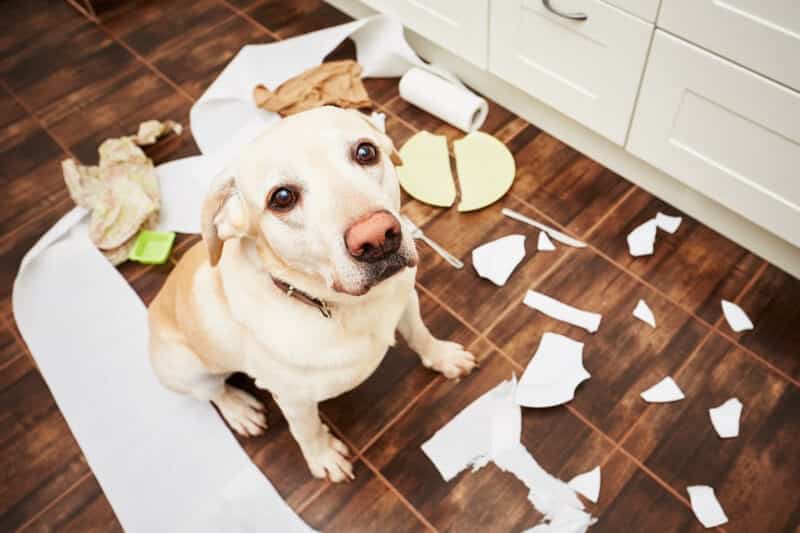Everything, Cats, Dogs, Pet Care, Training
How to Pet-Proof Your Home
You’re emotionally ready for your new puppy, kitten, dog, or cat. You’ve done your shopping — pet food, dishes, toys, brush, comb, identification tag, litter box, litter, collar, leash. Now you need to see your home from a dog or cat’s point of view.
A new puppyPuppies need to chew on things. Keep shoes, bottles of medication or supplements, toiletries, children’s toys, house cleaners, batteries, electrical cords, and anything else that a puppy can sink his teeth into out of reach. If you can’t put electrical cords safely behind furniture, look in lighting stores for electrical cord covers. You can keep closet doors closed, and you can install child-proof latches on cupboard doors. Puppies have tails that wag uncontrollably and front paws that they want to plant on everyone and everything. Move any puppy-level breakables higher than tail and paw level. When a puppy or dog is left home alone, a garbage container is an enticing target. A secure-fitting lid makes a trash can dog-proof so that dogs can’t open it and eat spoiled food or chew on food wrappers and bones. Antifreeze is a danger to dogs of any age. Its sweet taste is appealing, but even a teaspoon of antifreeze can be fatal. Making the garage out of bounds to dogs helps protect them from antifreeze and other household dangers such as rodent poison and garden chemicals.
A new kitten To kitten-proof your home, look at everything from the ground up. Anything that hangs down can be pulled at or pulled down, such as window covering cords, toilet paper, or a shirt sleeve dangling from the back of a chair. Anything that’s already on the floor can become imaginary prey. Spaces are also inviting. Don’t leave your dryer or washer door open, and close off any other spaces or areas that are out of bounds for felines. Get a scratching post and show the kitten where it is before she decides to try out the back of your sofa. If she sharpens her claws on the furniture anyway, Boundary Cat Repellent can prevent the behavior from being a repeat event.
New puppies and kittens Toilet seat lids should be kept down when you have kittens in the house because kittens are small enough to fall in and drown. The same precaution is advisable with small puppies. Some houseplants are poisonous to animals. A list of some poisonous houseplants is at plants-and-your-cat.com. If you aren’t sure if a particular plant is safe, place it out of reach of animals. Young kittens and puppies don’t instinctively know not to walk off the edge of a balcony. Don’t allow young animals on a balcony unsupervised unless it’s impossible for them to walk off it or climb or jump over the railing. Check that window screens are fastened securely. Not all animals that fall out of windows survive. Windows without screens should not be open wide enough for small animals to climb or fall through.
A new dog or cat The precautions for puppies and kittens are also good for dogs or cats. Bigger animals can jump higher and farther. Cats may be tempted to jump to a neighboring balcony. Most will be able to climb over a fence unless a barrier at the top of the fence makes it cat-proof. High fences are more of an obstacle to dogs, but some dogs can open unlocked gate latches within their reach or climb chain-link fences. Starting the fence a little underground prevents dogs from digging their way under it. While older animals may need more time to adjust emotionally to a new home, they’re less apt to tackle anything in their sight. Most grown dogs and cats are already housetrained, and they understand how to share a home with humans.

